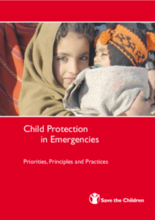During emergencies children face unique dangers. Both boys and girls face an increased risk of disease, malnutrition, gender-based violence, exploitation and a wide range of other violations including death and injury. They often become separated from their families and caregivers and have difficulty obtaining food and humanitarian assistance. The emotional impact on children affected by emergencies can be profound, but those who remain in the care of their families and communities are likely to recover more quickly. Schools are often closed or inaccessible during emergencies, leaving children without structure in their daily lives. Under these circumstances, children - some as young as seven years of age - have been abducted or coerced into joining armed forces or groups, where they are used as porters, spies, fighters and for sexual purposes. Child traffickers take advantage of social and community disruptions when governments and aid agencies are focused on other aspects of the emergency response.
Effective strategies already exist to protect children. Save the Children seeks to integrate child protection into all its emergency response programs, at every stage of the crisis. As part of this integration, Save the Children has developed strategies and programs to identify and prevent abuse; restore dignified living conditions for children; and promote children’s rights. Principal strategies include family tracing and reunification; education for displaced and refugee children; improved monitoring and accountability systems; land mine awareness; and activities to support children’s emotional and developmental needs.
©International Save the Children Alliance

